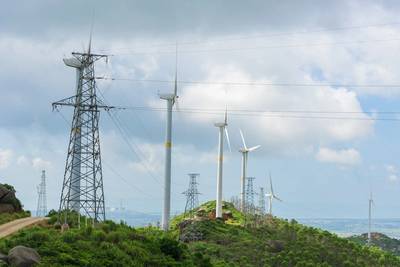China’s Wind Repowering Market to Boom from 2023
State-owned enterprises to dominate wind repowering market
China’s wind repowering market is expected to take off from 2023, finds a new report by Wood Mackenzie. More than 21 gigawatts (GW) (cumulative capacity) of China’s wind turbine fleet is expected to be repowered over the next 10 years (2019-2028).
Repowering refers to complete dismantling and replacement of old wind turbines at the original wind site. Wind farms older than 15 years are generally ideal candidates for repowering as the operation and maintenance cost is 50% higher than that of wind farms younger than five years.
While China’s near-term repowering activity is limited, repowering demand should accelerate post 2023, resulting in a compound annual growth rate of 83%. This is mainly driven by aging of installed base as the country’s wind market experienced tremendous growth during the 2007-2010 timeframe.
Wood Mackenzie consultant Kevin Han said, “There is an early mover opportunity for forward thinking OEMs and service providers able to develop repowering solutions for at-risk turbines prior to this rapid acceleration in demand.
“Despite the potential, the market is likely to pay little attention to the repowering market in the near term due to the limited capacity of aged wind turbine fleet, lack of supporting policies and near-term focus on fulfilment due to expiring FITs.”
A second driver of the repowering market boom is declining availability of good wind resources for new wind projects. Most new projects after 2023 will be in regions with wind speeds below 6.5 metre per second (m/s) and have an internal rate of return (IRR) of no more than 10%. Repowering at 9-10m/s sites could provide an IRR of over 15%. As subsidy cuts take effect and the new-build market slows, developers will increasingly focus on the repowering market for new investments.
State-owned asset owners (SOEs) are expected to be key players in the repowering market, as they hold more than 83% of operating wind assets. SOE exposure to aging wind assets will strengthen their motivation to engage in repowering activities with an eye towards enhanced cash flow and higher profits.
Han added, “In addition, SOEs are better positioned to overcome barriers to repowering, including negotiating terms with local governments and grid operators on issues such as land-use rights and operating hours.
“SOEs will dominate the market, commanding a repowering market share in excess of 96% in 2028. The remaining non-SOE segment is mainly composed of private companies, which are likely to exit the market when their turbines retire due to low risk tolerance and lack of subsidies.”
While there is a lack of policies to address challenges to the feasibility and profitability of repowering activities, Wood Mackenzie sees significant profits to be made from wind repowering and expects policy measures to be released in the 2020s.






